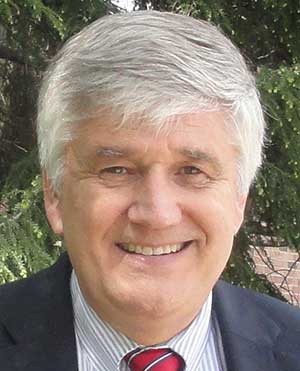
As every facet of our lives becomes more data-driven, it's important to remember the role of the heart in building donor relationships. Gary Bukowski shares four decades of development wisdom in this thoughtful blog. Below are some of his thoughts and reflections on harnessing the power of the heart in philanthropy.
A few years ago, I was asked to participate in a debate on “What Drives Giving: The Heart or The Brain?” Data or Emotion? I told the moderator that my hands-down choice was “The Heart” as my four decades of experience in development tells me unequivocally that emotion is the driving force behind the act of giving.
“There is a wonderful, mythical law of nature that the three things we crave most in life –happiness, freedom, and peace of mind –are always attained by giving them to someone else,” said Peyton Conway March, the famed US Army Chief of Staff in the early 20th century. The longer I have been in the fundraising profession, the more I agree with this statement.
In asking donors to become part of a great cause or purpose, I find that the more we discuss their desire to make a difference, the more I detect a willingness of heart and emotion to make that special gift, to fulfill their dream, or carry on their own or a loved one’s legacy.
There is no doubt that the mind and data play important parts in the donor’s philanthropic journey, but, from my experience, it is passion, emotion and the donor’s heart that drive the desire to make that special –sometimes transformative — gift. After reading The Heart Speaks by Mimi Guarneri, M.D., I became even more convinced about the interconnectivity between the heart and brain and how the heart plays such a powerful role in communicating with the brain through emotion and sensitivity. In this powerful book, Dr. Guarneri reveals how this remarkable organ is capable of making decisions, like the brain, and operating on many levels, it even has the power to heal.
The ability to accurately identify — and respond to — the emotions of your donors will help you build strong relationships, which generally take time to evolve and unfold. Finding what donors want to achieve through their giving and understanding, what my colleague Bill Crouch calls their unique “why” — and helping them arrive at something special is vitally important. Once donors and prospective donors are committed to fulfilling their unique dreams in a project, often they will proceed with haste!
In the development world, we place a lot of focus on analytics and data mining to find the donor that matches our nonprofit organization and its mission. But when you move beyond prospect identification and begin to work with a donor in the flesh and blood and you know they have the capacity and desire to truly become engaged with your organization – you know them and they know you – after building that mutual trust between each other, amazing things can happen! Sometimes it takes longer than the fundraiser may expect or desire, but once a deep and soulful connection is forged and you have honed in on the donor’s passion and focus, be prepared to watch something amazing happen! You’ll know it when you have reached the “fundraising tipping point.”
Recently I interviewed some donors and asked them to reflect on their contributions and volunteerism and asked what drove them to make their contributions. Consistently I heard the following remarks:
The findings from a study on Baby Boomers in The Chronicle of Philanthropy (July of 2015) confirmed many of my interviewees’ comments. Their top two reasons for giving?
There is no doubt that you need to identify financial capacity and current interest/involvement from donors to develop a major gift program that can eventually lead major gifts, whether they be mega or lifetime gifts. The analytics may get you to the table, but it is that passion, valued relationship and the donor’s heart that drives giving. It is the heart and that special collaboration with the “asker” that brings the donor to the fundraising finish line.
Begin working with your donors today. They are your future! Layout a timeline of meeting donors over the next month. Remember the famous Lao Tzu quote, “A journey of a thousand miles begins with the first step.”
Take your first step today and meet with a donor.
Gary Tweet

Gary Bukowski is the Associate Vice President of development at Sarah A Reed Children's Center in Erie, PA. He has over four decades of fundraising experience in the higher education and human service arenas.
Have a bequest story to share? Click here!
2103 Bayshore Boulevard
Unit 1501
Tampa, FL 33606
Products & Services
Subscriptions
Special Links
Copyright 2025 © PlannedGiving.Com